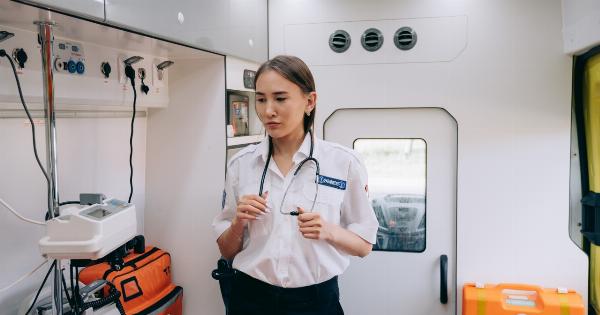Gastroscopy, also known as upper endoscopy, is a diagnostic procedure that allows a gastroenterologist to examine the inside of the esophagus, stomach, and the upper part of the small intestine.
This procedure involves the insertion of a flexible tube with a light and camera at the end, known as an endoscope, through the mouth and into the digestive tract.
Gastroscopy is a relatively safe procedure, but like any medical procedure, it is not without risks. It is essential to understand these potential risks before undergoing gastroscopy to make an informed decision.
Here we discuss the risks associated with gastroscopy.
1. Perforation
Perforation, although rare, is a severe complication that can occur during gastroscopy. It happens when the endoscope punctures or tears the gastrointestinal wall.
Numerous factors can contribute to perforation, such as a weakened or damaged gastrointestinal tract, excessive pressure applied during the procedure, or accidental instrument puncture.
If perforation occurs, it may require immediate surgical intervention to repair the damage. Symptoms of perforation may include severe abdominal pain, fever, chills, and difficulty swallowing.
If you experience any of these symptoms after undergoing gastroscopy, you should contact your healthcare provider immediately.
2. Bleeding
Another potential risk associated with gastroscopy is bleeding, either during or after the procedure. Biopsies or the removal of polyps can sometimes cause bleeding, especially if the areas being sampled are highly vascular.
In most cases, any bleeding that occurs during gastroscopy is minimal and stops on its own.
If significant bleeding occurs, it may require additional interventions, such as the application of medications, cautery, or in rare cases, blood transfusions.
It is essential to inform your healthcare provider if you have a bleeding disorder or are taking blood-thinning medications before undergoing gastroscopy.
3. Adverse Reactions to Sedation
Gastroscopy is typically performed under sedation to ensure patient comfort. However, sedation medications can have potential risks and side effects.
Adverse reactions to sedation may include difficulties with breathing, low blood pressure, allergic reactions, dizziness, or nausea.
It is crucial to inform your healthcare provider about any allergies or adverse reactions you have had to sedation medications in the past.
Additionally, be sure to follow their instructions regarding fasting before the procedure to help minimize the risk of complications associated with sedation.
4. Infection
Although rare, infection is a potential risk associated with gastroscopy. The endoscope and accessories used during the procedure should be properly cleaned and disinfected to prevent the transmission of bacteria or other microorganisms.
Your healthcare provider should follow strict infection control protocols, including using sterilized and disposable equipment whenever possible. Precautions such as these significantly reduce the risk of infection.
However, if you experience symptoms such as fever, increased pain, or drainage at the site of gastroscopy, you should contact your healthcare provider to rule out any infection.
5. Aspiration
During gastroscopy, there is a small risk of aspiration, which is the inhalation of stomach contents into the lungs. This can occur if the gag reflex is not adequately suppressed, or if there is regurgitation from the stomach.
Aspiration can lead to lung infections, such as pneumonia.
As a safety measure, you will be advised to fast for several hours before the procedure to minimize the risk of aspiration. It is crucial to follow these instructions carefully to reduce the likelihood of this complication.
If you experience symptoms such as coughing, difficulty breathing, or chest pain after gastroscopy, seek medical attention immediately.
6. Discomfort and Sore Throat
Gastroscopy involves the insertion of a tube through the mouth, which can cause discomfort and a sore throat afterward. This discomfort usually resolves within a day or two.
However, if the symptoms persist or worsen, it is essential to inform your healthcare provider.
7. Allergic Reactions
Although rare, some individuals may experience allergic reactions to the medications or materials used during gastroscopy. Allergic reactions can range from mild skin rashes to more severe reactions like difficulty breathing or anaphylaxis.
Prior to the procedure, it is crucial to inform your healthcare provider about any known allergies you have. They will take the necessary precautions to minimize the risk of allergic reactions during gastroscopy.
8. Pancreatitis
Pancreatitis, inflammation of the pancreas, is another potential risk associated with gastroscopy. It can occur due to trauma to the pancreatic duct during the procedure.
Although rare, pancreatitis can lead to severe abdominal pain, nausea, vomiting, and fever.
If you experience persistent and worsening abdominal pain after gastroscopy, it is essential to seek immediate medical attention, as pancreatitis requires timely treatment for proper management.
9. Reaction to Biopsy or Polyp Removal
If biopsies or polyp removal are performed during gastroscopy, there is a risk of local tissue reactions. While uncommon, some individuals may experience bleeding, inflammation, or damage to the surrounding tissues in the gastrointestinal tract.
These reactions can cause abdominal pain or discomfort.
It is important to follow any post-procedure care instructions provided by your healthcare provider to minimize the risk of complications associated with biopsies or polyp removal.
10. Missed Diagnoses
While gastroscopy is a valuable diagnostic tool, there is a small chance of missing certain abnormalities or diagnoses.
The accuracy of the procedure depends on various factors, including the skill and experience of the gastroenterologist, the quality of the equipment used, and the patient’s condition.
If symptoms persist or worsen after undergoing gastroscopy, it is crucial to follow up with your healthcare provider for further evaluation. Additional diagnostic tests may be recommended to ensure that no significant abnormalities were overlooked.
Conclusion
Gastroscopy is generally considered a safe procedure, but like any invasive procedure, it does carry some risks.
These risks include perforation, bleeding, adverse reactions to sedation, infections, aspiration, discomfort, allergic reactions, pancreatitis, reactions to biopsies or polyp removal, and the possibility of missed diagnoses.
It is essential to discuss the potential risks and benefits with your healthcare provider before deciding to undergo gastroscopy. They can provide you with personalized advice based on your specific medical history and circumstances.
By understanding the risks and taking necessary precautions, you can maximize the safety and effectiveness of gastroscopy as a diagnostic tool.






























